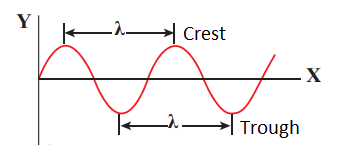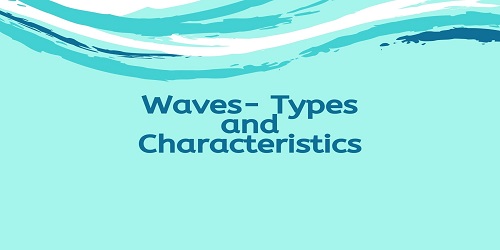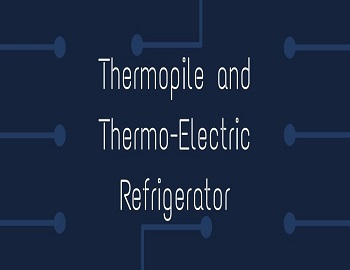Table of Contents
Introduction of Waves:
One of the most important phenomena of nature is the transportation of energy by means of waves. The wave phenomena are of fundamental importance to a physicist because any description of matter at atomic and subatomic scales without waves is simply not possible. Most of the waves are capable of transporting energy from one location to another but in doing so they do not transport any matter. In fact, a wave is defined as follows:
| A wave implies propagation of disturbance in some physical quantity of the medium from one place to another. |
A wave involves the propagation of a physical condition in space and time. For example, when we pluck a taut string at some point, a pulse travels on the string which represents a transverse displacement traveling on the string originating from the point of plucking. Here the physical quantity that propagates in the medium is displacement y. Similarly, in the case of sound waves, it is pressure p that propagates. The fundamental differentiation among waves of different types is the nature of the quantity that is being transported by the waves and how the vibrations are related to the direction of propagation.
Types of Waves:
(1) Mechanical Waves- are produced because of the deformation of the elastic medium. In mechanical waves, the particles of the medium vibrate. A physical medium is a must for the propagation of a mechanical wave. Sound waves, water waves, etc., are some examples of such waves.
(2) Electromagnetic Waves- In electromagnetic waves electric and magnetic field vectors propagate in space. These waves do not require any material medium to sustain them. Radio waves, microwaves, and light waves are some examples of such waves.
Types of Mechanical Waves:
Mechanical Waves can be divided into two types-
(1) Transverse Wave- In wave propagation, particles of the medium do not move along with the wave. It is the disturbance that moves forward. The particle simply vibrates about its mean position of rest.
| A wave in which each particle of the medium vibrates about its mean position of rest in a direction at right angles to the direction of propagation of the wave is called a transverse wave. |
Examples of transverse waves are the waves on the surface of the water, the movement of a string of a sitar or violin, electromagnetic waves, heat waves, X-rays, light waves, etc.

In a transverse wave, if the displacement of a particle at any instant is maximum in the positive direction, it is said to be at the crest of the wave at that instant. On the other hand, if a particle at any instant has a negative maximum displacement, it is called a trough of the wave at that instant.

The transverse waves can easily be demonstrated by setting up waves along a string or cord stretched horizontally by moving them slightly up and down and up again. When a string is tied at one end and moved up and down through the other end then a disturbance or a wave is propagated along the length of the string, i.e., the particles of the string oscillate along a direction right angle to the direction along which the waves propagated. Hence the waves formed in the string are transverse.
(2) Longitudinal Wave-
| A wave in which the particles of the medium move to and fro about their mean position of rest along the direction in which the wave propagates through the medium is called a longitudinal wave. |

In a longitudinal wave, each oscillating particle lags in phase by a constant amount behind its predecessor. In this type of wave motion, the particles of the medium are alternately crowded together and spread out. The place where the particles are crowded together is called a region of compression or condensation. On the other hand, the place where the particles are farther apart than their normal separation is known as a region of rarefaction.
In a region of condensation, the particles of the medium are moving in the direction of propagation of the wave, while in a region of rarefaction they are moving in opposite directions. On account of the crowdness of particles in the region of condensation, the pressure and hence the density of the medium is increased, whereas in a region of rarefaction, due to the spreading of particles, the pressure and hence the density of the medium is decreased.
Sound waves travel through the air, vibrations of the air column in organ pipes, and vibrations of the air column above the surface of the water in the tube of a resonance apparatus, etc. are some examples of longitudinal waves.
Characteristics of Wave Motion:
Following are the characteristics of wave motion-
(1) Wave motion is a kind of disturbance that travels through a medium.
(2) A material medium is essential for the propagation of mechanical waves. The medium must possess three properties, viz., elasticity, inertia and minimum friction amongst the particles of the medium.
(3) In wave propagation, the particles of the medium do not move along with the wave. The particles simply execute oscillations about their mean position.
(4) The amplitude of oscillations and the periodic time of all oscillating particles of the medium are the same throughout the wave.
(5) In the case of a transverse wave, the position of maximum displacement in the positive direction (upwards) is called the crest and that in the negative direction (downwards) is called the trough. The distance between the two successive crests or between the two successive troughs is called the wavelength of the transverse wave.
(6) During the propagation of a longitudinal wave, at some places the particles of the medium come closer and at some other places they spread farther apart as compared to their normal state. The places where the particles are closer are called compressions, whereas the places where they are farther apart are called rarefactions. The distance between two successive compressions or between two successive rarefactions is called the wavelength of the longitudinal wave. The condensation and rarefaction move with the wave and is responsible for the propagation of energy.
(7) The velocity of the particles during their vibration is different at different positions. For example- all the particles cross their mean position with maximum velocity and at extreme positions, their velocity is zero.
(8) The velocity of wave motion through a particular medium is constant. It depends only on the nature of the medium. The velocity of wave motion does not depend upon its frequency or wavelength or intensity.
(9) In one complete oscillation the total displacement of the vibrating particle is zero.
(10) The waves can be reflected, refracted, or diffracted and can cause interference with other similar waves.
Difference Between Transverse and Longitudinal Waves:
Following are the points of the difference between Transverse and Longitudinal Waves.
| Transverse waves | Longitudinal waves |
|---|---|
| (1) The direction of vibration of particles of the medium is perpendicular to the direction of propagation of waves. | The direction of vibration of particles of the medium is parallel to the direction of propagation of waves. |
| (2) Transverse waves look like crests and troughs propagating in the medium. | Longitudinal waves give the appearance of alternate compressions and rarefaction moving forward. |
| (3) These waves can be transmitted through solids or over liquid surfaces. | These waves can be transmitted through all three types of media, viz, solids, liquids, and gases. |
| (4) They do not cause pressure changes in the medium through which they pass. | They cause changes in the pressure of the different parts of the medium through which they pass. |
| (5) In the case of a transverse wave, the displacement-distance graph gives the actual picture of the wave itself. | In the case of longitudinal waves, the graph only represents the displacement of the particles at different points at a given time. |
| (6) Examples of transverse waves are the waves on the surface of the water, the movement of a string of a sitar or violin, electromagnetic waves, heat waves, X-rays, light waves, etc. | Sound waves travel through the air, vibrations of the air column in organ pipes, and vibrations of the air column above the surface of the water in the tube of a resonance apparatus, etc. are some examples of longitudinal waves. |









Comments (No)